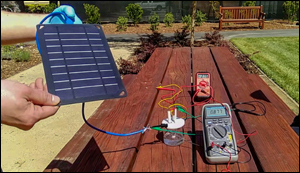Stanford researchers create hydrogen fuel from seawater
19. 3. 2019 | Stanford University | www.stanford.edu
Stanford researchers have devised a way to generate hydrogen fuel using solar power, electrodes and saltwater from San Francisco Bay.
The findings, published March 18 in Proceedings of the National Academy of Sciences, demonstrate a new way of separating hydrogen and oxygen gas from seawater via electricity. Existing water-splitting methods rely on highly purified water, which is a precious resource and costly to produce. Hydrogen is an appealing option for fuel because it doesn’t emit carbon dioxide. Burning hydrogen produces only water and should ease worsening climate change problems.

Previous studies attempting to split seawater for hydrogen fuel had run low amounts of electric current, because corrosion occurs at higher currents. But Dai, Kenney and their colleagues were able to conduct up to 10 times more electricity through their multi-layer device, which helps it generate hydrogen from seawater at a faster rate.
Read more at Stanford University
Image Credit: H. Dai, Yun Kuang, Michael Kenney
-jk-




